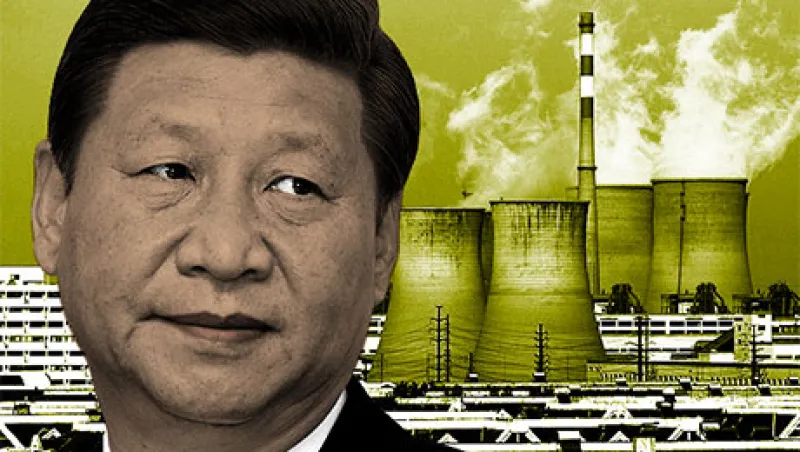Aside from the U.S. economic recovery, the biggest factor for financial markets in 2014 is the continued health of China. Will the Politburo of the Communist Party succeed in pulling off a so-called soft landing of the economy again in 2014? Or will the rebalancing reforms announced with considerable fanfare at the party’s Third Plenum in November actually get under way — and act as a serious drag on growth?
For now, most global macro traders seem pretty sanguine about the near-term outlook and the ability of Beijing’s technocrats to keep growth on track.
Our December poll of three dozen traders assigned an average probability of two thirds that the country’s gross domestic product would grow between 6 percent and 7.5 percent this year. Strikingly, they put odds of 1 in 4 that growth would exceed 7.5 percent. By contrast, the traders projected just a 1-in-5 chance that China would have a hard landing, with growth falling below 6 percent.
The numbers were effectively unchanged from our previous poll, in June 2013, when traders placed an average 66 percent bet that the leadership would avoid a hard landing in 2013. That call turned out well as officials estimated that China’s real growth rate, when all the data are crunched for 2013, would come in at 7.6 percent, slightly above the official 7.5 percent target and firmly in soft-landing territory.
The real issue concerns the medium term and the extent to which Beijing’s efforts to rebalance the economy from export-driven growth toward domestic consumption may slow the Chinese juggernaut. Traders’ disagreements over the economic outlook beyond the one-year mark are as spirited as the debate among China watchers in leading think tanks. For example, there is a sharp dispute on this point among the highly respected China specialists at the Washington-based Carnegie Endowment for International Peace.
Michael Pettis, a Beijing-based investment-banker-turned-academic (and rock impresario) on the Carnegie team, offers a bearish view. “China has no choice but to rebalance its economy; the only question is the manner in which it does so,” he says. “Rebalancing will happen either in a less painful and more orderly way, as a consequence of specific steps enacted by Beijing, or in a more painful and disorderly way, as a consequence of the imposition of constraints. But either way, it will happen.”
Rebalancing involves replacing business investment with household consumption, and the math is ominous for Chinese growth. Investment constitutes such a high proportion of GDP — a staggering 50 percent — that cutting it back even slightly in 2014 would cause growth to plummet. A 5 percent reduction in investment would cut the projected annual growth rate by a third.
“In principle the adverse impact of slower growth in investment should be offset by faster growth in consumption, but it has proven very difficult for China to increase the GDP share of consumption, largely because consumption-constraining policies are at the heart of China’s growth model,” argues Pettis. “Previous policy successes had almost always involved targets — such as expanding the high-speed rail network, deepening transportation infrastructure, building ports, expanding manufacturing capacity, creating corporate champions — that could be addressed and resolved mainly by increasing investment. However, when the target involved an outcome that could not be determined by an increase in investment — like slowing environmental degradation, reducing corruption, raising the income share of the poor, expanding the quality rather than the quantity of education — Beijing often failed to meet its target.”
There are big stakes here, warns Pettis. “Either Beijing moves quickly to bring investment growth down sharply, or overinvestment will contribute to further financial fragility, leading ultimately to the point where credit cannot expand quickly enough and investment will collapse anyway. This is just arithmetic.”
Pettis’s Carnegie colleague, Yukon Huang, takes the opposite position on the urgency of a rebalancing process. He thinks consumption is growing just fine; it’s the production side of the GDP equation that needs improvement. “Actual consumption expenditures in China have been increasing steadily by 8 percent a year, led by double-digit growth in real wages,” he says. “Thus the premise that more balanced growth means faster growth in wages or consumption is simply not true. Sustained growth can only come from increasing factors of production, labor or capital, and productivity. The challenge for the country’s new leadership is pushing forward with reforms that would increase productivity.”
Although Pettis and Huang stress different reform priorities — Pettis focusing on a move to market-set interest rates and input prices, Huang emphasizing efforts to boost productivity — both looked to the Third Plenum for smoke signals of which way, and how quickly, the Politburo under President Xi Jinping, who is also general secretary of the Communist Party, would embrace reform.
“The Third Plenum of each Chinese leadership’s five-year term holds particular significance because it exposes the degree to which the new leadership has consolidated power, and unveils its general policy direction,” explains Paul Haenle, director of the Carnegie-Tsinghua Center for Global Policy in Beijing (and who also served on the National Security Council under presidents George W. Bush and Barack Obama). “Xi Jinping ended the highly anticipated conference by vowing to give the market a ‘decisive’ role in the Chinese economy and creating two powerful new national security and economic decision-making bodies.” Such organizational changes are important because in Beijing, as in Washington, personnel is policy.
Both China bulls and bears heard what they wanted to hear in terms of policies but were disappointed in terms of timing. Some of the 15 main tasks and 300 policy goals in the plenum report were quite specific, such as forcing state-owned enterprises to remit 30 percent of their annual profits to Beijing, but the report was vague about when such goals would be achieved. In most cases, including the SOE profit levy, the goals were described as occurring “by 2020,” a full six years away. Like spending cuts in Washington’s fiscal compromise, the distasteful medicine of Chinese structural reforms is loaded into the outer years.
“Announcing the reforms is one thing; actually implementing them on the ground will be a political struggle for Xi & Co.,” says a Hong Kong–based private equity manager with long experience in China. “Exposing state-owned enterprises to market interest rates rather than low-cost loans from banks, reducing all these subsidies and making them compete with private firms will break rice bowls all over China. And limiting local officials’ ability to confiscate and sell land for development will cut off their largest revenue source, for the local party and for their own bank accounts.”
In other words, pushing ahead on rebalancing will undermine the dual foundations of the Communist Party. According to Cheng Li of the Brookings Institute, “They could potentially undermine not only reform success but also party unity since local officials are the power base of the party. There’s a 10 percent to 15 percent chance that reform will fail. If reforms fail to deliver improvements within the next two or three years, there will likely be another vicious power struggle,” such as the internal party jockeying that led to the toppling of Bo Xilai, a Xi rival, for embezzlement and abuse of power.
This narrow window may account for the rapid consolidation of power by the new group on the Politburo. According to a Beijing-based think tank expert, “Xi Jinping and his Politburo are veering right on the economy, giving the market the dominant role in allocating resources, even as they veer left on politics, tightening their grip on communications and propaganda, intimidating or jailing dissidents and cracking the whip on intraparty discipline. This right-left combination serves many goals, including power consolidation after the leadership change, but it also improves the odds that the reforms will actually get implemented, rather than ignored, like so many other pronouncements from the center.” If this expert is correct, then the odds of a hard landing sometime in 2014 go up.
Vicious power struggles are rarely good news for domestic economic growth or peaceful foreign relations. The purge of Bo and the launch of a corruption investigation against Zhou Yongkang, a former domestic security chief and Politburo Standing Committee member, suggest that the fissures within the party run right to the top. China’s aggressive policies toward Vietnam and the Philippines over its territorial claims in the South China Sea and toward Japan and South Korea over its claims in the East China Sea suggest that Beijing may be veering left on foreign policy as well. That’s the view of the traders, at least, who indicated in the December poll that it’s a 1-in-5 bet that China will clash with one of its neighbors over disputed sea borders in 2014.
It is striking that our traders assign an average 20 percent probability to a serious maritime clash between China and one of its neighbors and regard it as a 20 percent probability that China’s growth rate will fall into the hard-landing territory of below 6 percent this year. One of those bets almost has to be wrong: a maritime clash of such magnitude would be likely to hit Chinese trade in both directions and bring growth screeching to a halt.
Aggressive territorial claims may play well inside the Zhongnanhai leadership compound in Beijing and with the population at large, but they don’t go over well with financial markets. Oddly enough, clashes over these claims are more painful for China than for the other side in such disputes. A study by financial data mining firm Kensho of 18 serious incidents in the South China Sea between May 2010 and November 2012 found that equities rallied in Vietnam, Malaysia and the Philippines after those countries’ forces clashed with the People’s Liberation Army, even as the renminbi, Chinese equity markets and crude oil futures took modest hits.
Xi’s strategy of tacking left and right may serve many policy goals, but propping up the Shanghai Stock Exchange doesn’t appear to be one of them.
James Shinn (jshinn@princeton.edu) is lecturer at Princeton University’s School of Engineering and Applied Science and CEO of Teneo Intelligence. After careers on Wall Street and in Silicon Valley, he served as the national intelligence officer for East Asia at the Central Intelligence Agency and then as assistant secretary of defense for Asia at the Pentagon. He serves on the advisory boards of Oxford Analytica; Kensho; and CQS, a London-based hedge fund.
Also in this series:






